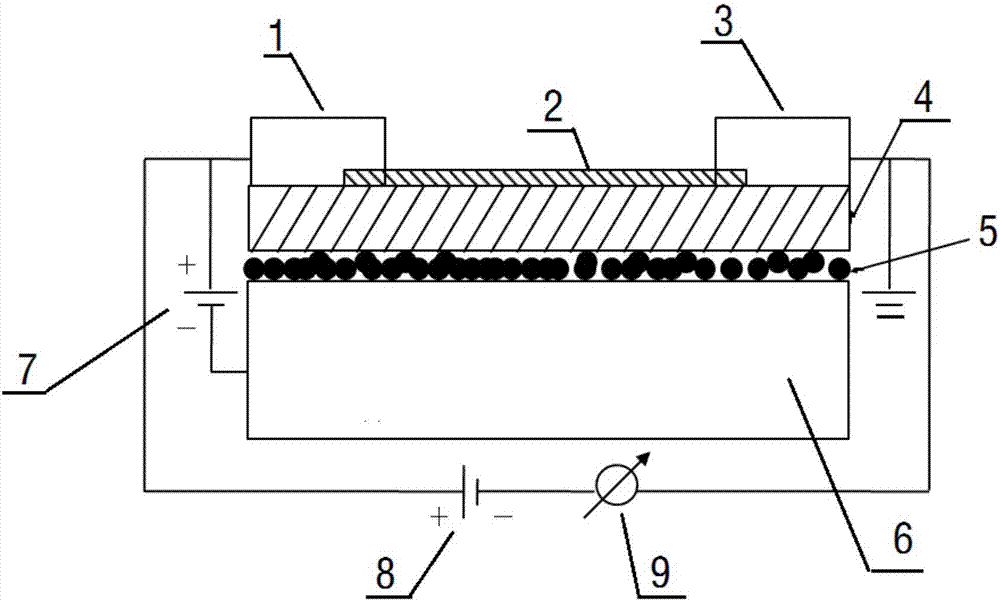Graphene Photodetectors
A photodetector and graphene technology, applied in the field of photoelectric detection, can solve the problem of low response rate, and achieve the effects of fast response time, excellent light sensitivity, and compatible preparation technology
- Summary
- Abstract
- Description
- Claims
- Application Information
AI Technical Summary
Problems solved by technology
Method used
Image
Examples
Embodiment 1
[0023] A graphene photodetector, the main structure of the detector includes single-layer graphene (prepared by tearing tape method); 90nm silicon dioxide is deposited as an insulating medium layer by thermal evaporation; silicon is used as a gate electrode; a layer of CdSe semiconductor Quantum dots, as light-absorbing carriers, are deposited on the silicon surface by spin coating; gold / nickel, as source and drain electrodes, are connected to external circuits with a thickness of 50nm / 5nm, deposited by electron beam lithography and thermal evaporation. The response time of the photodetector in the near-infrared band reaches the nanosecond level, and the responsivity reaches 1.1×10 8 A / W, the response wavelength ranges from visible to near-infrared bands.
Embodiment 2
[0025] A graphene photodetector, the main structure of the detector comprises single-layer graphene (prepared by chemical vapor deposition); 120nm Al 2 o 3 As an insulating dielectric layer, it is deposited by thermal evaporation; Ge is used as a gate electrode; two layers of PbS semiconductor quantum dots, as a light-absorbing carrier, are deposited on the surface of Ge by spin coating; gold / nickel is used as a source and drain, connected to an external circuit , with a thickness of 50nm / 5nm, deposited by electron beam lithography and thermal evaporation. The response time of the photodetector in the near-infrared band reaches the nanosecond level, and the responsivity reaches 1.2×10 8 A / W, the response wavelength ranges from visible to near-infrared bands.
Embodiment 3
[0027] A graphene photodetector, the main structure of the detector includes two layers of graphene (prepared by chemical vapor deposition); 100nm silicon dioxide is used as an insulating medium layer and deposited by thermal evaporation; Si is used as a gate electrode; four layers of CdS semiconductor Quantum dots, as light-absorbing carriers, are deposited on the Si surface by spin coating; gold / nickel, as the source and drain electrodes, are connected to external circuits with a thickness of 50nm / 5nm, deposited by electron beam lithography and thermal evaporation. The response time of the photodetector in the near-infrared band reaches the nanosecond level, and the responsivity reaches 1.35×10 8 A / W, the response wavelength ranges from visible to near-infrared bands.
PUM
 Login to View More
Login to View More Abstract
Description
Claims
Application Information
 Login to View More
Login to View More - R&D
- Intellectual Property
- Life Sciences
- Materials
- Tech Scout
- Unparalleled Data Quality
- Higher Quality Content
- 60% Fewer Hallucinations
Browse by: Latest US Patents, China's latest patents, Technical Efficacy Thesaurus, Application Domain, Technology Topic, Popular Technical Reports.
© 2025 PatSnap. All rights reserved.Legal|Privacy policy|Modern Slavery Act Transparency Statement|Sitemap|About US| Contact US: help@patsnap.com

